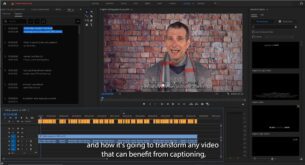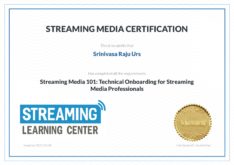My article, The State of Video Codecs 2015, from the Streaming Media Sourcebook, is up on StreamingMedia.com. Here are the first few paragraphs to let you know what I covered.
Video compression is the critical enabler of all video streaming, and today we’re at a codec crossroads unlike any that we’ve experienced. Though H.264 remains firmly entrenched as the go-to codec for most digital video transmission and delivery, particularly for streaming, we’ve seen the first deployments of HEVC and VP9, and heard aggressive claims (“technical performance superior to H.265”) from Xiph and Mozilla about the open source ultra HD (UHD) codec Daala. Out of nowhere, RealNetworks demonstrated its RMHD codec, with “HEVC-like image quality” at CES 2015. At the same time, we’re hearing claims of bitrate optimizers that can deliver HEVC-like bandwidth savings to H.264.
So it’s appropriate to start asking questions—for instance, how much more efficiency can you tweak from H.264? How soon will H.265/HEVC become truly essential? Where does VP9 fit into the codec marketplace? Will Daala or RMHD ever become meaningful alternatives to HEVC or VP9? But let’s start with a look backward.
Perspective
The last great seismic codec shift occurred on Aug. 20, 2007, when Adobe incorporated H.264 playback into Flash, making H.264 playback free for all Flash-enabled computers and notebooks. In those premobile, pre-OTT days, this meant that at least 97 percent of the target consumers for virtually all streaming video could use the new codec as soon as they upgraded. This day marked the clear transition from VP6 to H.264.
If only the world were still so simple. Today, all forward-looking codec strategies must consider the installed base of non-upgradeable mobile and OTT devices, plus the impending demise of Flash in favor of HTML5’s Media Source Extensions (MSE). So unless you’re planning a totally greenfield video deployment solely to Ultra High Definition (UHD)-capable devices, there won’t be a clean break from H.264 to a UHD codec, at least not in 2015.
Click here to read the rest of the article.
 Streaming Learning Center Where Streaming Professionals Learn to Excel
Streaming Learning Center Where Streaming Professionals Learn to Excel







